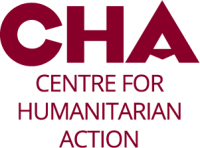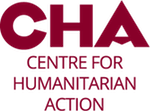| Author: | Ralf Südhoff |
| Date: | 20. December 2021 |
“There are so many multilateral and international processes that reach a dead end. This one has not.” With these words, Jan Egeland, General Secretary of the Norwegian Refugee Council, described the Grand Bargain (GB) and explained why he was willing to take over the leadership of the Grand Bargain 2.0 as “Eminent Person” in June 2021. His statement is a fitting summary of the GB’s status as the most-ambitious and most-inclusive humanitarian reform project in decades and why it still deserves the attention and support of humanitarian stakeholders. Moreover, he did not hide that its most-crucial milestones are still yet to come.
GB 2.0 represents the second iteration of a reform project for humanitarian aid, having begun just a few months ago. Since the resolution for the initial GB was passed at the World Humanitarian Summit 2016, it has acquired its current total of 63 signatories, ranging from governments to UN agencies as well as civilian charities. It brought together these three sectors permanently for the first time, giving it a clear distinction from related forums such as the Inter-Agency Standing Committee (IASC) and Good Humanitarian Donorship. What’s more, the GB stakeholders have successfully launched a series of relevant reform initiatives, some of them thanks to the German federal government. In a total of initially ten workstreams dedicated to topics such as efficiency, effectiveness, localisation and cash-based programmes, the stakeholders have established numerous reform ideas and initiatives that are based on the underlying idea of the “Bargain”, of a “trade” in which donor governments essentially promised more flexibility and predictability in their funding in return for more transparency and demonstrable efficiency in the use of these funds by aid organisations.
Despite the impressive progress made in most of the GB’s workstreams, many experts complained about the lack of impact made by the GB and have now pinned their hopes on the new GB 2.0 format. Why is that? What hopes and challenges are there for GB 2.0, which began just under six months ago and is taking place in a crisis-plagued world that, according to the Global Humanitarian Overview 2022 published in early December, will reach a new record of 274 million people in need?
Groundbreaking achievements
The success achieved by the first version of the GB, lasting until June 2021, is well documented (HPG, CHA). Numerous projects and proposals developed in fine detail have provided a foundation for and driven the conceptual development of important goals such as making aid non-bureaucratic, financing flexible for more-effective aid, strengthening local stakeholders that have previously been largely neglected and offering instruments such as expanded cash-based programmes as a path to flexible and dignified aid. The GB workstream for localisation, for example, developed a detailed plan for how the workload could be split up between international and local stakeholders in a prudent way in the future. Organisations such as the NRC and IRC, in workstreams 7 and 8, came up with ways to finance humanitarian aid more flexibly over multiple years and the innovative instruments that could be used to implement this. Meanwhile, workstream 9, with the support of Germany’s federal government, developed the highly praised “8+3” reporting format which illustrated how humanitarian aid could successfully be made less bureaucratic even when considering the countless, highly varied, complex reporting requirements imposed by donors.
This list could go on for much longer. In its final evaluation of the GB’s implementation, ODI concluded that “the Grand Bargain has evolved into a key multilateral policy forum with demonstrable results”. Nevertheless, the CHA was not alone in analysing that, “with regard to many of the initiatives it sparked, the GB has so far remained predominantly output-oriented and has rarely achieved comprehensive outcomes”.
Implementation gap
The GB began many interesting projects and initiatives, however it was only able to substantively modify a small number of processes. There are a few figures that serve as an example demonstrating this: when it comes to financing local stakeholders which, according to the GB, should receive 25% of aid as directly as possible in future, the large majority of governments as well as international NGOs and UN agencies missed this target even when each using their own calculation method. The same applies to the minimum 30% flexible funding. Of the flexible funds that are available, only a few INGOs forward them to local stakeholders. The example of the unbureaucratic 8+3 reporting format also illustrates the gap between conception and implementation when it comes to the GB’s considerable reform initiatives, as only a small number of the GB signatories had adopted the format as their standard, even in 2021.
This focus on numerous micro-level projects that tend to be isolated resulted in limited impact on a macro level for process- and system-related issues. This is all the more obvious when cross-cutting issues of the GB are examined in more detail, such as gender-sensitive humanitarian aid, a practice-oriented linkage of previously isolated approaches in the Humanitarian-Development-Peace nexus or questions concerning a “Participation Revolution” for which there has so far only been publicity.
What is the reason for this discrepancy between the highly regarded results and initiatives at the GB’s working level, and the lack of outcomes for which it is criticised? By their nature, the causes are diverse. However, there exists a broad consensus that, overall, there is a core problem in the lack of political dynamism in the GB and for humanitarian-reform issues overall. This is not a given, if compared with the WHS 2016 where the GB’s political dynamism enabled far-reaching resolutions supported by numerous heads of state and government who had specially travelled out for the occasion, including Chancellor Angela Merkel from Germany. The political relevance of humanitarian challenges and their interlinkages to security policies, migration policies and human rights issues had a significantly different status just a few years ago compared to today.
Setting clear priorities for more impact
These challenges exist against a backdrop of €40 billion that will be needed for global humanitarian aid in 2022, more than 20 times what was needed in 2000 due to war, conflict and climate change. For this reason, the goal of GB 2.0 is to restore the political momentum and set clear priorities in order to advance its impact and crucial humanitarian reforms substantially by 2023. “The talking phase is over, there is a million pages explaining what we need to do (…) We need to make progress now,” Jan Egeland demanded. How can this be done? Has progress already been made?
At its core, GB 2.0 has intended to do four things differently since July 2021:
- focus on implementing and integrating the results of the ten GB workstreams
- define only two “enabling priorities” for the future: “localisation” and “quality funding”
- establish a more strategic and political format for the prioritised issues, with issue-based “political caucuses” that are given a clear time frame and objectives
- establish “National Reference Groups” at a local level to enable participatory monitoring of progress
Given the new political-caucus format in particular, there has already been very tangible, visible progress at a practical level. The first three issues defined for the caucuses are:
1) Cash coordination
2) The role of intermediaries in support of locally led action
3) Concrete steps on quality funding
While at first glance these may again sound like technical issues, they are in effect highly political topics with considerable relevance for reform, as political and organisational interests have a critical and usually blocking role in them.
For instance, there is a debate about the coordination of cash programmes that has been ongoing for years and impeded numerous aid missions. Cash programmes represent roughly one-fifth of global humanitarian aid today, and the debate fundamentally questions the classic silos and mandates of organisations, especially amongst major aid organisations such as the UNHCR, WFP, RCRC and INGOs. Furthermore, it affects core issues in humanitarian coordination on the part of donor governments that have acted in very contradictory ways, which can dramatically increase competition between aid organisations versus overcoming these by the cash modality. The lack of coordination that results from this cannot be remedied without considering the political and organisation-specific interests of all stakeholders and has now become a core problem that extends far beyond the programme level of cash transfer payments. It is all the more noteworthy that the GB 2.0 caucuses have initiated tangible steps for this problem at the highest level of the stakeholders involved (USA, ECHO; WFP, OCHA, UNHCR, UNICEF, IFRC, ICVA, A4EP, CCD). They have defined a clear target time of February 2022 for making concrete agreements.
Things have also become more concrete with the caucus on the future role of intermediary organisations such as INGOs and UN agencies in particular, which often act as the middle person between public donors and local implementers. It can build on the extensive preliminary work done by the workstream and has set a target of March 2022 for defining three priorities for tangible change in issue areas such as risk transfer to local partners, visibility of local stakeholders and quality assurance.
At the same time, the third caucus on “quality funding” from donors can illustrate the major challenges that GB 2.0 will also face when it is confronted with heavily conflicting political objectives in the course of a political approach. The reforms of donor funding, which have been recognised as wise, can serve as a cautionary tale in this respect. On the one hand, all donor governments agreed to provide at least 30% of their funds flexibly, without earmarking them; this target is already applicable. On the other, there are few donor governments that have made progress on this and some are even applying new doctrines, such as the latest “national-interest” orientation of British aid, which attach explicit conditions to the donor’s release of funds. It is therefore no coincidence that the third caucus has so far been unable to produce any kind of measurable results or agreed milestones.
Where is the localisation aspect?
GB 2.0 will also need to achieve success outside of the current political caucuses, which will result in further challenges. Firstly, representatives of the Global South are not alone in their scepticism about none of the initially prioritised political issues having a direct focus on the role of local stakeholders. The attention on intermediary organisations here also fuels criticism about the appointment of Jan Egeland as an Eminent Person alongside his main role as the Secretary General of the NRC, a major intermediary organisation that has so far missed GB localisation targets such as 25% funding of local stakeholders by a significant margin. For this reason, NEAR and the Charter for Change in a letter to Egeland underlined their fears that these quantitative targets could become dominated by the organisational interests of the Global North due to the focus on a new quality in relationships with international NGOs.
In line with this scepticism, the progress on the National Reference Groups being a forum for monitoring by and accountability for local stakeholders is still considered very unclear. The final form of these groups, the locations where they will be piloted and the way they will be integrated with the GB 2.0 structure still appear vague. How far this journey still is for cultural change and a participation revolution within the Grand Bargain for a start, even the most-tangible progress in this regard can underline: While the NEAR network has been invited to join the GB’s influential Facilitation Group, this move to take Global South representatives on board took Northern GB stakeholders five years.
What’s more, the localisation issue also demonstrates a structural challenge for GB 2.0, as the workstreams of the old GB are free to continue working. The participants of workstreams on localisation issues, for instance, welcome this, and one of the reasons why is that the new political caucuses of GB 2.0 deliberately apply a different balance of inclusivity through participation and decision-making ability by smaller forums in order to achieve tangible progress. This raises the question of how the work done by the workstreams can be incorporated into the work of GB 2.0 and also be made more politically relevant, particularly for issues that have not been covered in the caucuses so far.
Germany’s federal government is going to have a serious role in all these challenges. This is due to its position as the world’s second-largest donor of humanitarian aid – a role that will be expanded even further financially in light of the commitments made in the new governing parties’ coalition agreement. The German government’s serious role is also due to its acceptance of an offer to become a permanent member of the GB Facilitation Group, becoming one of the few donor representatives.
Germany’s involvement in the GB has sparked many initiatives in the past. On the other hand, though, Germany has also not managed to make its reform initiatives politically effective by broad impact on processes and systemic issues in humanitarian aid. The coalition agreement underpinning the new federal government now explicitly names the Grand Bargain and its objectives as one of its humanitarian priorities. If this priority is consistently realised, Germany’s first woman and youngest foreign minister ever could help give the Grand Bargain and overall humanitarian reform what it has been lacking the most: political momentum.
Ralf Südhoff is Director of the CHA. He heads the research project on the policy and strategic capacities of German humanitarian actors. He also focuses on the Syrian crisis and the MENA region, on humanitarian reform and donor policies, on global food security and the Humanitarian-Development-Peace-Nexus.
This article first appeared in welternährung, the journal of Welthungerhilfe.


